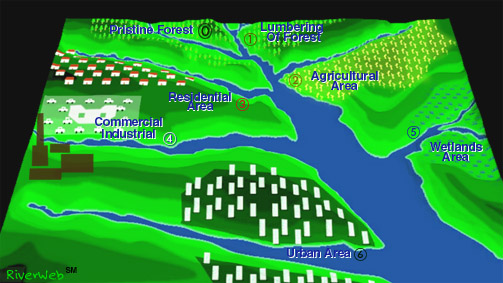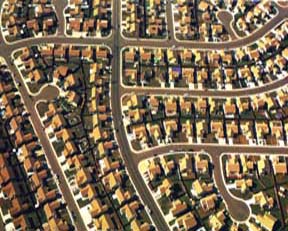| |
Login
Vision
Development
Teachers
Students
Tour
Site Map
Team
Contact Us
|
|
Students' Corner
About Land Use


|
0
Pristine
Forest |
The pristine forest in our model consists of 40,000 acres of untouched forest. This station is used as a comparison to the other stations as an ideal watershed. |
 |
1
Lumbered
Forest |
Although only a very small percentage of the 500 million acres of U.S. forested land is harvested each year,
forestry activities can cause significant water quality problems if improperly managed. Road construction and road use are the primary sources of NPS pollution on forested lands. |

|
2
Agricultural
Area |
Our agricultural land usage is 80, 000 acres of mixed agriculture. This means that we model not only
land that is used by farmers growing crops, but also land that is used to raise livestock. |

|
3
Residential
Area |
Suburban landscapes are covered by paved surfaces like sidewalks, parking lots,
roads, and driveways. They prevent water from percolating down into the ground,
cause runoff to accumulate, and funnel into storm drains at high speeds.
|

|
4
Commercial
Industrial |
Commercial land use includes storefront commercial and office uses, personal and nonprofessional service establishments, and restaurants. Industrial uses include warehousing and distribution as well as manufacture of beverages, chemical, acid and fertilizer manufacture and storage, distillation of coal, and metal foundries. |

|
5
Wetland
Area |
The wetlands area that is part of the RiverWeb watershed is one that
has been overdeveloped, and is far from pristine.
Healthy wetlands benefit fish, wildlife, and humans because they protect
many natural resources, only one of which is clean water.
|

|
6
Urban
Area |
Nonporous (impervious) urban landscapes
don't let runoff slowly percolate into
the ground. Urbanization also increases the
variety and amount of pollutants transported to receiving waters |
Last Modified: October 2000
|



